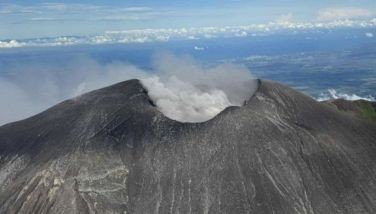Dengue cases nearing 100,000 mark – DOH
MANILA, Philippines - With still three months left in 2015, the number of dengue cases in the country is near the 100,000 mark, the Department of Health (DOH) said yesterday.
Based on a report of the DOH Epidemiology Bureau, there were 92,807 dengue cases recorded across the country from January 1 to September 19.
The DOH said this is 23.5 percent higher than the 75,117 cases registered during the same period in 2014.
However, it was observed that the 269 death toll recorded this year was lower than the 316 cases last year.
Central Luzon accounted for the highest cases at 14,127, followed by Calabarzon with 14,082, National Capital Region with 10,385, Ilocos region with 8,136, Northern Mindanao 6,451, Cagayan Valley 5,677 and Soccsksargen with 5,552.
The records also showed cases had increased in the regions of Cagayan Valley (176 percent), Cordillera Administrative Region (164 percent), Metro Manila (156 percent), Central Luzon (119 percent), Calabarzon (95 percent), Ilocos (91 percent), Autonomous Region in Muslim Mindanao (41 percent) and Central Visayas (13 percent).
The provinces of Bulacan and Cavite have declared a state of calamity in their respective areas due to the rising number of dengue patients and deaths brought about by the disease.
Sen. Nancy Binay called for an inquiry into the increasing number of dengue cases in the country.
Binay filed Senate Resolution No. 1608 seeking explanation from the DOH on how it could effectively control the spread of dengue.
“It is important for the DOH to inform the public of the overall state of dengue outbreak in the country in order to fully address the situation and protect the health and lives of the people,” Binay said.
Health Secretary Janette Garin reiterated the DOH’s calls for the public to be vigilant against dengue by eliminating the possible breeding sites of mosquitoes.
Dengue is spread by the bites primarily of Aedes aegypti mosquitoes which thrive in clean and stagnant water abundant during rainy days.
The DOH reminded the public that such mosquitoes could also proliferate even during the dry spell caused by the El Niño season if water containers are not properly covered.
A person suffering from dengue has high fever (40°C); headaches; joint, bone or muscle pains; pain behind the eyes; nausea or vomiting; swollen glands and rashes.
The flu-like symptoms would last for two to seven days, after an incubation period of four to ten days after being bitten by an infected mosquito, according to the World Health Organization.
The WHO advised special attention should be given when the person starts to exhibit warning signs. – Christina Mendez
- Latest
- Trending































